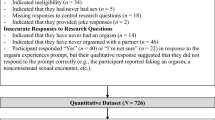Abstract
The current study tested the hypothesis that women pretend orgasm as part of a broader strategy of mate retention. We obtained self-report data from 453 heterosexual women (M age, 21.8 years) in a long-term relationship (M length, 32.8 months) drawn from universities and surrounding communities in the southeastern United States. The results indicated that (1) women who perceived higher risk of partner infidelity were more likely to report pretending orgasm, (2) women who reported greater likelihood of pretending orgasm also reported performing more mate retention behaviors, and (3) women’s perceptions of partner infidelity risk mediated the relationship between pretending orgasm and the performance of cost-inflicting mate retention behaviors, such as Intersexual Negative Inducements (“Flirted with someone in front of my partner”) and Intrasexual Negative Inducements (“Yelled at a woman who looked at my partner”). Thus, pretending orgasm may be part of a broader strategy of mate retention performed by women who perceive higher risk of partner infidelity.
Similar content being viewed by others
Notes
Scores on the partner sexual infidelity risk variable were positively skewed (M = .99; range, 0–9). To correct for skew, we log-transformed the partner sexual infidelity and conducted analyses with the log-transformed variable. The results did not differ substantively. The analyses that included the transformed variable are available upon request from the corresponding author.
References
Baker, R. R., & Bellis, M. A. (1995). Human sperm competition: Copulation, masturbation and infidelity. London: Chapman and Hall.
Baron, R. M., & Kenny, D. A. (1986). The moderator-mediator variable distinction in social psychological research: Conceptual, strategic, and statistical considerations. Journal of Personality and Social Psychology, 51, 1173–1182.
Buss, D. M. (1988). From vigilance to violence: Tactics of mate retention in American undergraduates. Ethology & Sociobiology, 9, 291–317.
Buss, D. M., & Shackelford, T. K. (1997). From vigilance to violence: Mate retention tactics in married couples. Journal of Personality and Social Psychology, 72, 346–361.
Darling, C. A., & Davidson, J. (1986). Enhancing relationships: Understanding the feminine mystique of pretending orgasm. Journal of Sex and Martial Therapy, 12, 182–196.
Gangestad, S. W., Thornhill, R., & Yeo, R. A. (1994). Facial attractiveness, developmental stability, and fluctuating asymmetry. Ethology and Sociobiology, 15, 73–85.
Hite, S. (1976). The Hite report. New York: Macmillan.
McKibbin, W. F., Bates, V. M., Shackelford, T. K., Hafen, C. A., & LaMunyon, C. W. (2010). Risk of sperm competition moderates the relationship between men’s satisfaction with their partner and men’s interest in their partner’s copulatory orgasm. Personality and Individual Differences, 49, 961–966.
Muehlenhard, C. L., & Shippee, S. K. (2010). Men’s and women’s reports of pretending orgasm. Journal of Sex Research, 47, 552–567.
Schaefer, L. C. (1973). Women and sex: Sexual experiences and reactions of a group of thirty women as told to a female psychotherapist. New York: Pantheon.
Shackelford, T. K., LeBlanc, G. J., Weekes-Shackelford, V. A., Bleske-Rechek, A. L., Euler, H. A., & Hoier, S. (2002). Psychological adaptation to human sperm competition. Evolution and Human Behavior, 23, 123–138.
Shackelford, T. K., Weekes, V. A., LeBlanc, G. J., Bleske, A. L., Euler, H. A., & Hoier, S. (2000). Female coital orgasm and male attractiveness. Human Nature, 11, 299–306.
Thornhill, R., & Gangestad, S. W. (2008). The evolutionary biology of human female sexuality. New York: Oxford University Press.
Thornhill, R., Gangestad, S. W., & Comer, R. (1995). Human female orgasm and mate fluctuating asymmetry. Animal Behaviour, 50, 1601–1615.
Wiederman, M. W. (1997). Pretending orgasm during sexual intercourse: Correlates in a sample of young adult women. Journal of Sex and Marital Therapy, 23, 131–139.
Acknowledgments
The data for this study were collected at Florida Atlantic University. The article for this study was prepared while the first author was at the HIV Center for Clinical and Behavioral Studies at Columbia University and New York State Psychiatric Institute, where she was supported by Award Number T32 MH019139 (Principal Investigator, Theodorus Sandfort, Ph.D.), from the National Institute of Mental Health. The content is solely the responsibility of the authors and does not necessarily represent the official views of National Institute of Mental Health or the National Institutes of Health.
Author information
Authors and Affiliations
Corresponding author
Rights and permissions
About this article
Cite this article
Kaighobadi, F., Shackelford, T.K. & Weekes-Shackelford, V.A. Do Women Pretend Orgasm to Retain a Mate?. Arch Sex Behav 41, 1121–1125 (2012). https://doi.org/10.1007/s10508-011-9874-6
Received:
Revised:
Accepted:
Published:
Issue Date:
DOI: https://doi.org/10.1007/s10508-011-9874-6




